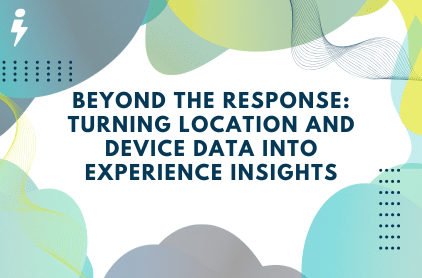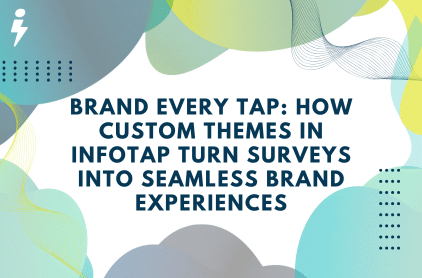A tap on a mobile ad.
A click inside an email.
A quick scan of a QR code in a store.
These moments seem small, but they’re the start of something much bigger. They signal curiosity, intent, and movement — and increasingly, they don’t stay confined to one channel. A customer might begin on their phone, continue inside a store, complete a survey on Wi-Fi, then return online days later.
The challenge is that most organizations track digital and physical interactions in different systems. Web clicks live in one dashboard. In-store engagement lives somewhere else. Surveys, Wi-Fi logins, QR scans — all separate pieces of a journey that should be connected, but rarely are.
Infotap bridges that gap.
By unifying digital signals and real-world actions into one journey, Infotap helps teams understand not just what customers do — but how each tap or click shapes the experience that follows.
Why Connecting Digital to Physical Matters
Today’s guests move fluidly between online and offline environments. Someone may tap a promotion on their phone in the morning, then step into a store that afternoon. Another may scan a QR code in-person and later return digitally to complete a follow-up action.
Understanding this pattern matters for one reason: it reflects real behavior.
Digital analytics tell only half the story. Physical interactions tell the rest. When they’re combined, organizations can finally see:
which digital actions truly lead to real-world engagement
how customers navigate physical spaces after interacting online
how design, timing, and context influence survey completion
what role devices play in shaping experience quality
A digital tap shows interest.
A physical visit shows commitment.
Linking the two reveals intent — and that is where better decision-making starts.
A Real Use Case: The Digital Tap That Drives a Physical Visit
Consider a retailer running a mobile promotion: “Tap to get an in-store offer.”
Using Infotap, they follow the moment a customer taps the promotion, enters the store, and engages with on-site touchpoints like QR codes or surveys.
What they discover is often surprising.
Digital-first visitors — those who interact online before coming in person — tend to be more engaged. They spend more time in-store. They complete more surveys. And because their journey includes both digital and physical signals, their feedback provides richer context.
Instead of seeing an isolated tap or a standalone survey, Infotap shows the complete path:
Tap → Visit → Engage → Respond → Return
That sequence helps teams understand not just outcomes, but why those outcomes happen — and where experiences can be refined.
The Data Behind a Digital-to-Physical Journey
Infotap captures signals from every part of a customer’s experience:
digital touches like ad taps, email clicks, and app navigation
in-person actions such as Wi-Fi logins, QR scans, and survey completions
environmental factors like location, dwell time, and movement through a space
device patterns, including operating systems, browsers, and screen types
When these signals layer together, they create a complete, contextual picture.
Not a fragmented set of metrics — a full narrative of how someone moves from screen to space and back again.
This unified view helps teams identify patterns such as:
when digital engagement peaks before in-store visits
where visitors are most likely to interact physically after tapping digitally
which devices perform best for survey completion
where friction occurs along the journey
These are insights that siloed systems simply can’t provide.
How Infotap Turns Journeys Into Action
Infotap doesn’t just track transitions; it makes them meaningful.
Dashboards visually connect digital signals to physical presence, allowing teams to quickly see how a journey unfolds in real time. Instead of switching between analytics tools, survey platforms, Wi-Fi systems, and in-store technologies, Infotap consolidates everything into one place.
This gives organizations the ability to:
understand which digital campaigns lead to in-store traffic
refine on-site signage or QR placement based on real engagement
adjust survey design to match device patterns
optimize the timing of follow-up messages
align marketing, operations, and experience teams around the same data
It’s a clearer, more precise way to understand how guests actually behave — and how small improvements can compound into major experience shifts.
Real-World Impact
When organizations begin connecting digital and physical signals, the insights often lead to meaningful improvements.
A retailer might discover that certain QR codes perform poorly simply because of where they’re placed. After relocating them based on guest flow, engagement increases almost immediately.
Another might learn that mobile visitors — especially iPhone users — complete surveys at a higher rate, prompting a shift toward mobile-first design.
Or a team might realize that digital promotions lead to increased foot traffic in specific zones, helping them direct staff where they’re needed most.
None of these insights come from digital data alone. None come from physical data alone, either.
They emerge only when the two are connected.
Designing Experiences That Reflect Real Behavior
Digital-to-physical journey mapping isn’t just about analytics — it’s about understanding people.
When you know how a guest moves between channels, you can design experiences that feel natural, effortless, and relevant at every step. You can create signage that aligns with digital campaigns, optimize timing that matches real movement, and craft surveys that meet users where they are — both physically and digitally.
Infotap helps organizations close the loop, aligning what customers do online with what they need in the real world.
It turns isolated signals into meaningful stories.
It turns journeys into insights.
And it turns insights into better experiences.
Ready to See How Your Journeys Connect?
Request a demo today to explore how Infotap unifies digital taps, physical visits, and real-time engagement into a single view.
You’ll see where guests begin, where they go next, and how every interaction fits into the bigger picture — helping your team design smarter, more connected experiences from start to finish.






